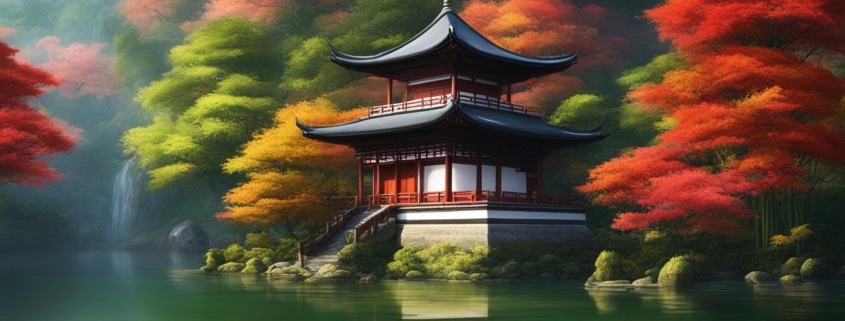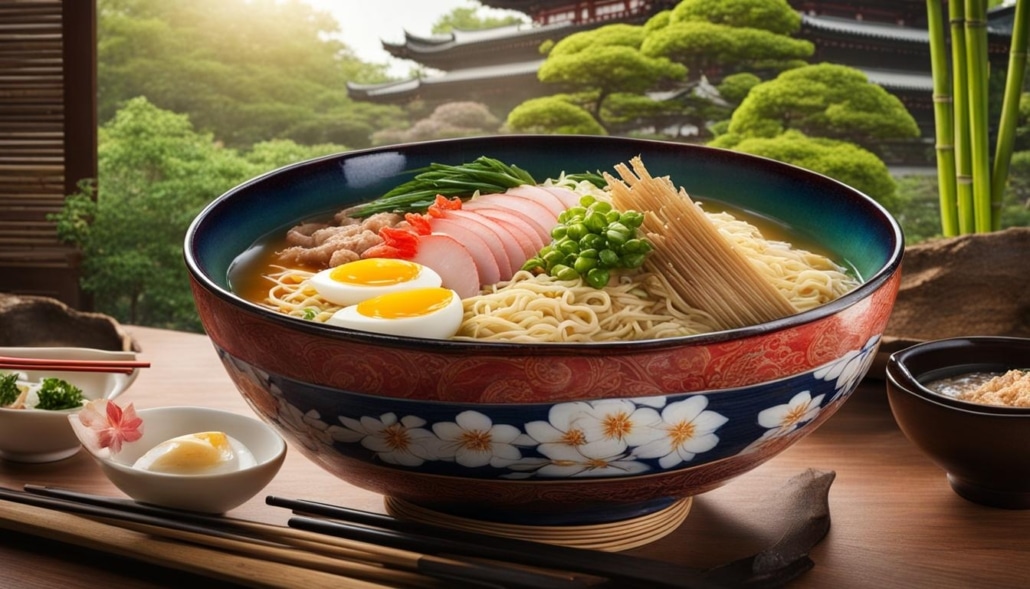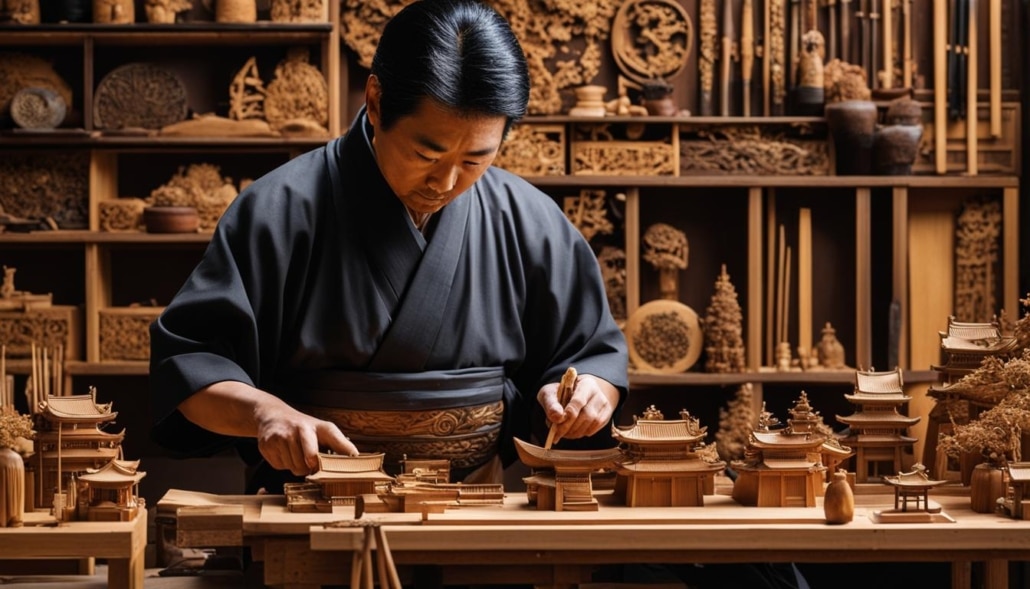Cultural Richness of Kyoto, Japan: A Traveler’s Journey
Welcome to Kyoto, a city that beckons travelers with its unparalleled cultural richness and deep-rooted traditions. Nestled in the heart of Japan’s Kansai region, Kyoto offers a captivating journey into Japanese culture, making it a dream destination for those eager to explore the essence of this enchanting country.
As you embark on your adventure through Kyoto, prepare to be immersed in a world where ancient traditions seamlessly coexist with modernity. With its plethora of temples, shrines, traditional tea houses, and captivating festivals, Kyoto presents itself as a living testament to Japan’s vibrant heritage.
Through the lens of Japanese culture, you’ll delve into a rich tapestry of history, art, spiritual practices, and seasonal customs that have shaped this iconic city. From the iconic Golden Pavilion and Fushimi Inari Shrine to the magical Arashiyama Bamboo Grove and the world of geisha in the Gion district, Kyoto showcases a diverse range of cultural gems waiting to be discovered.
Immerse yourself in the harmonious blend of past and present as you explore Kyoto’s historical landmarks, marvel at its natural beauty, indulge in its culinary delights, admire its artistic soul, and immerse yourself in its vibrant festivals and events.
Join us on a captivating journey through Kyoto, where you’ll experience firsthand the essence of Kyoto culture, Japanese culture, and uncover a treasure trove of travel destinations that will leave an indelible mark on your heart and soul.
Kyoto’s Historical Landmarks
Kyoto, the former imperial capital of Japan for over a thousand years, is steeped in a rich history that is beautifully preserved through its many historical landmarks. These landmarks offer visitors a window into the city’s ancient heritage, showcasing its cultural significance and architectural marvels. Among the most iconic attractions are Kinkaku-ji, also known as the Golden Pavilion, and Fushimi Inari Shrine.
Kinkaku-ji, a Zen temple covered in gold leaf, stands as a testament to Kyoto’s architectural splendor and spiritual heritage. This shimmering structure reflects on the still waters of its surrounding garden, enchanting all who visit. It is a symbol of eternal beauty and serenity.
“Kinkaku-ji is a masterpiece of harmony between nature and architecture. The golden reflection of the temple on the pond is breathtaking.” – Travel Enthusiast
Fushimi Inari Shrine, on the other hand, is a vibrant and sacred place that captivates visitors with its mesmerizing vermilion torii gates. As you wander through the seemingly endless path of gates that meanders up the mountain, you can’t help but feel a sense of reverence and wonder.
These historical landmarks, Kinkaku-ji and Fushimi Inari Shrine, are just a glimpse into the rich tapestry of Kyoto’s past. They embody the city’s profound connection to its cultural heritage and leave an indelible impression on all who experience them.
Kyoto’s Natural Beauty
In addition to its historical richness, Kyoto is blessed with natural beauty that changes with each season. The city’s landscapes and serene environments provide a harmonious backdrop to its cultural heritage, creating a captivating atmosphere for travelers to immerse themselves in.
Arashiyama Bamboo Grove: A Tranquil Sanctuary
The Arashiyama Bamboo Grove is a must-visit destination that showcases the mesmerizing natural beauty of Kyoto. As visitors step into the grove, they find themselves surrounded by towering bamboo stalks that create a surreal and serene experience. The sound of rustling leaves and the filtered sunlight shining through the dense bamboo canopy create a tranquil ambiance, allowing visitors to reconnect with nature and find solace in its peaceful embrace.
Philosopher’s Path: A Picturesque Stroll
For those seeking a peaceful and picturesque experience, the Philosopher’s Path is a must-see attraction. Lined with hundreds of cherry trees along a canal, it offers a serene and enchanting stroll, especially during the cherry blossom season. As delicate pink petals fill the air and gently carpet the path, visitors can indulge in the beauty of nature while contemplating the philosophy of life, just as the path’s name suggests. The Philosopher’s Path is a true testament to Kyoto’s natural splendor and the perfect place to immerse oneself in the harmony of the changing seasons.
| Kyoto’s Natural Beauty | |
|---|---|
| Attraction | Description |
| Arashiyama Bamboo Grove | A tranquil sanctuary where visitors can walk amidst towering bamboo stalks, creating a surreal and serene experience. |
| Philosopher’s Path | A peaceful and picturesque stroll lined with hundreds of cherry trees, offering a beautiful view, especially during cherry blossom season. |
The Arashiyama Bamboo Grove and the Philosopher’s Path are just a glimpse of Kyoto’s natural wonders. From lush gardens and picturesque mountains to peaceful rivers and tranquil parks, the city encapsulates the beauty of Japan’s natural landscapes. Exploring Kyoto’s natural beauty is a soul-enriching experience that complements the city’s cultural richness, providing travelers with an immersive journey that touches both heart and soul.
Kyoto’s Culinary Delights
Kyoto’s culinary scene is a reflection of the city’s refined culture and dedication to preserving traditional flavors and techniques. From exquisite kaiseki dining to indulgent matcha sweets, Kyoto offers a feast for the senses.
Kaiseki: A Celebration of Seasonal Delicacies
Kaiseki is a traditional multi-course meal that showcases the artistry and craftsmanship of Kyoto cuisine. Each course is thoughtfully curated to highlight the season’s freshest ingredients, creating a harmonious balance of flavors, textures, and aesthetics. With meticulous preparation and attention to detail, kaiseki chefs elevate simple ingredients into culinary masterpieces.
“Kaiseki is a journey through the seasons, an expression of nature on a plate.” – Chef Hiroshi Nakamichi
Typically consisting of multiple courses, kaiseki offers a progression of flavors and textures, from delicate sashimi and appetizers to simmered dishes, grilled meats, and a beautifully crafted dessert. It is an immersive dining experience that allows guests to savor the essence of Kyoto’s culinary heritage.
Matcha Sweets: The Essence of Kyoto’s Tea Culture
Matcha, a finely ground powdered green tea, is a cornerstone of Kyoto’s tea culture. Known for its vibrant green color and distinct flavor, matcha is used not only for traditional tea ceremonies but also as an essential ingredient in Kyoto’s renowned sweets.
The art of making matcha sweets, or wagashi, requires skill, precision, and an appreciation for subtlety. These confections are delicately crafted to reflect the changing seasons and evoke a sense of tranquility. They often feature seasonal motifs and ingredients, such as cherry blossoms in spring or chestnuts in autumn.
Indulging in matcha sweets is a sensory experience. With each bite, you’ll discover a delicate balance of sweetness and bitterness, a testament to the harmony and depth of Kyoto’s tea culture.
Nishiki Market: Kyoto’s Culinary Wonderland
Nishiki Market, affectionately known as “Kyoto’s kitchen,” is a bustling culinary hub where locals and visitors alike gather to explore the city’s vibrant food scene. This narrow, covered street is lined with an array of stalls and shops offering a tantalizing variety of fresh produce, seafood, spices, and street food.
At Nishiki Market, you can sample Kyoto’s culinary delights directly from the source. From plump, juicy strawberries to fragrant grilled fish skewers and freshly made sushi, the market is a treasure trove of flavors waiting to be discovered.
| Must-Try Kyoto Cuisine | Recommended Dish |
|---|---|
| Kyoto-style Sushi | Nigiri sushi made with seasonal fish |
| Yudofu | Tofu simmered in a delicate kombu broth |
| Obanzai | Assortment of Kyoto-style home-cooked dishes |
| Kyo-kaiseki | A multi-course meal featuring the best of Kyoto’s seasonal ingredients |
Whether you’re a food lover looking to embark on a culinary adventure or a curious traveler eager to immerse yourself in Kyoto’s gastronomic delights, a visit to Nishiki Market is an essential part of the Kyoto experience.
Immerse yourself in the culinary wonders of Kyoto, where kaiseki and matcha sweets take center stage. Explore Nishiki Market and indulge in the city’s vibrant food scene, savoring the flavors that have been lovingly crafted for centuries.
Kyoto’s Artistic Soul
Kyoto is a haven for art enthusiasts and those seeking unique craftsmanship. The city proudly showcases its exquisite textiles, pottery, and traditional crafts, enticing visitors to immerse themselves in the artistic soul of Kyoto.
The Kyoto Handicraft Center is a treasure trove for handmade Kyoto handicrafts. This cultural hub offers workshops where visitors can learn the techniques behind these intricate crafts and create their own masterpieces. From delicate kimonos to intricate paper crafts, the center provides an opportunity to witness firsthand the skill and dedication of Kyoto’s artisans.
“Kyoto Handicraft Center is a mecca for handcrafted treasures. Attending a workshop here allowed me to connect with the rich artistic heritage of Kyoto and learn from skilled craftsmen.” – Amy Thompson, Travel Enthusiast
One of the most renowned artistic neighborhoods in Kyoto is the Kiyomizu Pottery Area. Located near the famous Kiyomizu-dera Temple, this district is a haven for pottery enthusiasts. The area is dotted with charming ceramic shops and studios, where visitors can observe potters in action, shaping and firing their creations with meticulous precision.
Immerse yourself in the world of Kyoto handicrafts by exploring these two notable destinations:
Kyoto Handicraft Center Workshop Options:
| Workshop | Description |
|---|---|
| Kimono Experience | Learn about the vibrant world of traditional Japanese textiles. Dress up in an elegant kimono and experience the beauty of Kyoto’s ancient clothing culture. |
| Washi Paper Craft | Discover the art of washi papermaking, a technique dating back centuries. Create your own paper crafts using traditional methods and designs. |
| Indigo Dyeing | Experiment with indigo dye to create unique patterns on fabric. Learn the history and techniques of this ancient dyeing process. |
Must-Visit Shops in Kiyomizu Pottery Area:
- Morita Ceramics: A family-run ceramic studio known for its meticulously handcrafted teaware, including exquisite teapots and tea bowls.
- Inoue Ceramics: Explore a wide selection of contemporary pottery with intricate designs, ranging from delicate vases to decorative plates.
- Kamada Kōshichi: Witness the delicate art of Kutani ware pottery, which features intricate hand-painted patterns and vibrant colors.
Embark on a journey of artistic discovery in Kyoto, where the city’s rich cultural heritage comes alive through its handicrafts and remarkable artistry.
Kyoto’s Festivals and Events
Kyoto’s calendar is filled with vibrant festivals and events that not only celebrate the changing seasons but also showcase the city’s rich cultural heritage. These festivities offer visitors a unique opportunity to immerse themselves in Kyoto’s lively atmosphere and create unforgettable memories.
Gion Matsuri
One of Japan’s most renowned festivals, Gion Matsuri, takes place annually in Kyoto during the month of July. Dating back over a thousand years, this festival originated as a purification ritual to appease the gods during the spread of epidemics. Today, it has evolved into a spectacular event featuring magnificent floats, traditional music, and vibrant parades.
Gion Matsuri, one of Japan’s most famous festivals, showcases magnificent floats and traditional costumes.
| Event | Date |
|---|---|
| Mikoshi Togyo Procession | July 17th |
| Yamaboko Junko Parade | July 24th |
| Mitarashi Festival | Throughout July |
During Gion Matsuri, the city comes alive with vibrant energy as locals and tourists alike join the festivities. The highlight of the festival is the Yamaboko Junko Parade, where elaborately decorated floats are pulled through the streets of Kyoto by teams of participants. Visitors can witness the grandeur of Gion Matsuri by strolling through the festival’s lively atmosphere and admiring the intricate craftsmanship of the floats and traditional costumes.
Hanami: Cherry Blossom Viewing
In spring, Kyoto transforms into a picturesque wonderland as cherry blossoms bloom across the city. Hanami, the tradition of cherry blossom viewing, is a cherished cultural activity in Japan, and Kyoto offers stunning locations to experience this seasonal spectacle.
The beauty of cherry blossoms is best enjoyed in Maruyama Park, known for its massive weeping cherry tree and vibrant night illuminations during the peak sakura season. Along the Kamo River, visitors can partake in hanami picnics under the cherry trees while admiring the breathtaking views.
Hanami, the tradition of cherry blossom viewing, is a quintessential Kyoto experience, best enjoyed in Maruyama Park or along the Kamo River.
During Hanami, locals and tourists gather beneath the blooming cherry trees to appreciate their delicate beauty. The soft pink hues create a magical ambiance, where friends and families come together to relax, indulge in delicious food and drinks, and celebrate the arrival of spring.
Whether you attend the Gion Matsuri or indulge in hanami, Kyoto’s festivals and events offer a unique glimpse into the city’s vibrant culture and traditions. By immersing yourself in these festivities, you’ll create unforgettable memories and gain a deeper appreciation for Kyoto’s rich heritage.
Conclusion
Experience the magic of Kyoto, a city that seamlessly blends ancient traditions with modernity, offering travelers a captivating journey through time and culture. Immerse yourself in the cultural richness of Kyoto and discover a destination that will leave a lasting impression.
Embark on a quest to explore Kyoto’s historical landmarks, from the iconic Golden Pavilion, Kinkaku-ji, to the mesmerizing torii gates of Fushimi Inari Shrine. Lose yourself in the serenity of Kyoto’s natural beauty, with tranquil spots like the Arashiyama Bamboo Grove and the picturesque Philosopher’s Path.
Indulge your taste buds in Kyoto’s culinary delights, savoring the artistry of kaiseki cuisine and indulging in matcha sweets. Immerse yourself in the city’s artistic soul, where traditional crafts and pottery come to life at the Kyoto Handicraft Center and Kiyomizu Pottery Area.
Don’t miss out on Kyoto’s vibrant festivals and events, such as the grandeur of Gion Matsuri and the enchantment of hanami, the cherry blossom viewing tradition. These cultural experiences will transport you to a world of tradition and celebration.
Kyoto offers a travel experience like no other, where cultural immersion awaits at every turn. Discover the heart and soul of Japan’s rich heritage in this captivating city, leaving you with memories that will last a lifetime.
FAQ
What makes Kyoto a culturally rich destination?
Kyoto is culturally rich due to its historical significance as the former imperial capital of Japan for over a thousand years. The city is home to numerous temples, shrines, traditional tea houses, and captivating festivals that offer an immersive experience for travelers seeking to explore Japanese culture.
What are some must-visit historical landmarks in Kyoto?
Kyoto is famous for its historical landmarks such as Kinkaku-ji, also known as the Golden Pavilion, a Zen temple covered in gold leaf, and Fushimi Inari Shrine, renowned for its thousands of vermilion torii gates that create a mesmerizing path up the mountain.
What natural attractions does Kyoto have to offer?
Kyoto’s natural beauty can be experienced in places like the Arashiyama Bamboo Grove, where visitors can walk amidst towering bamboo stalks, and the Philosopher’s Path, a peaceful canal lined with cherry trees that provides a picturesque stroll, especially during the cherry blossom season.
What is Kyoto’s culinary scene like?
Kyoto is known for its refined culinary scene, offering traditional multi-course meals called kaiseki that showcase seasonal ingredients and meticulous preparation techniques. Visitors can also indulge in matcha sweets, as Kyoto is famous for its high-quality matcha tea.
Where can I explore Kyoto’s artistic side?
Kyoto is a haven for art enthusiasts. The Kyoto Handicraft Center provides workshops and the opportunity to purchase authentic Japanese crafts. The Kiyomizu Pottery Area is a neighborhood known for its ceramic shops and studios, allowing visitors to witness the craftsmanship firsthand.
What festivals and events take place in Kyoto?
Kyoto’s calendar is filled with festivals that celebrate the changing seasons and historical events. The Gion Matsuri is one of Japan’s most famous festivals, showcasing magnificent floats and traditional costumes. Hanami, the tradition of cherry blossom viewing, is also a quintessential Kyoto experience.
What can I expect from a trip to Kyoto?
A trip to Kyoto offers a journey through time and culture, where ancient traditions and modernity coexist seamlessly. From exploring historical landmarks and immersing oneself in natural beauty to savoring the culinary delights and experiencing traditional festivals, Kyoto provides a unique and enriching travel experience.






Leave a Reply
Want to join the discussion?Feel free to contribute!